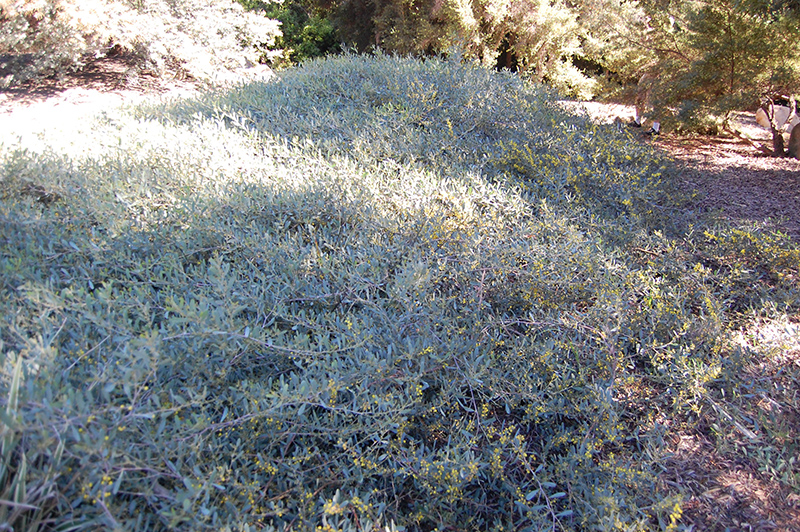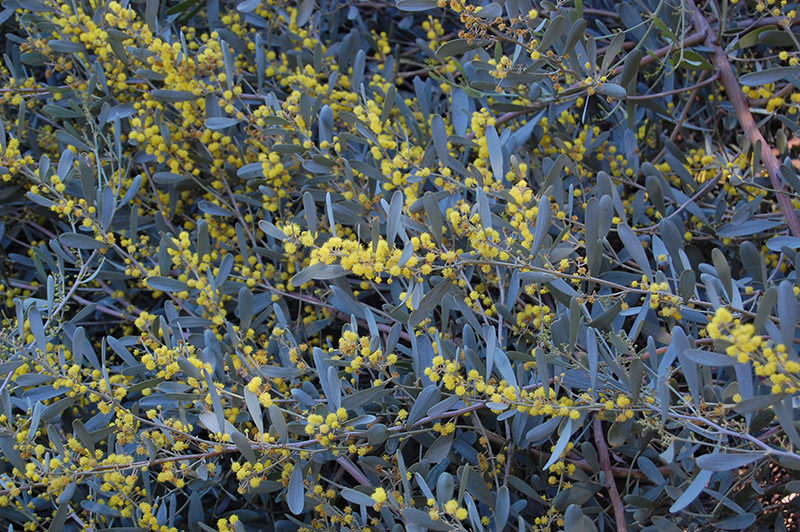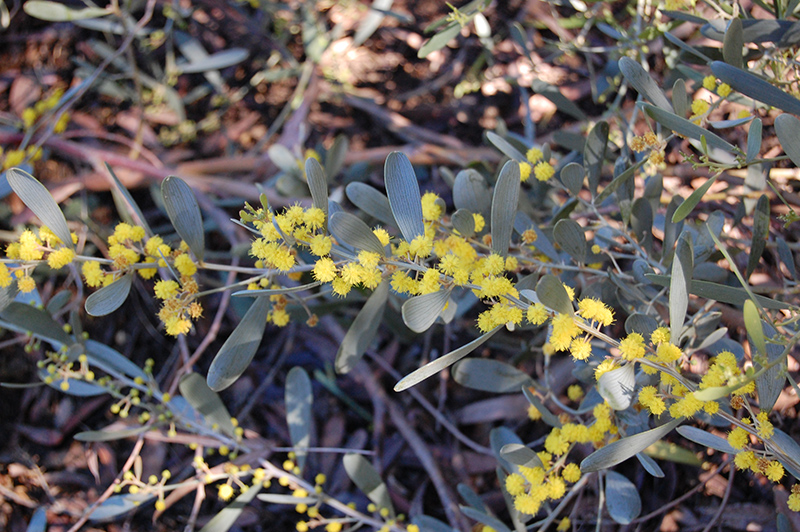Low Boy Prostrate Acacia
Acacia redolens 'Low-Boy'
Height: 24 inches
Spread: 15 feet
Sunlight:
![]()
![]()
Hardiness Zone: 8b
Other Names: Groundcover Acacia
Description:
A low growing, densely branched shrub, covered with narrow gray-green phyllodes (leaves); vanilla scented yellow flowers appear in spring but are not showy; great for dune stabilization, tolerates sea spray; adaptable, and a good groundcover for dry areas
Ornamental Features
Low Boy Prostrate Acacia has attractive grayish green foliage with hints of silver on a plant with a spreading habit of growth. The narrow leaves are highly ornamental and remain grayish green throughout the winter. It features subtle clusters of fragrant yellow flowers along the branches from late winter to early spring.
Landscape Attributes
Low Boy Prostrate Acacia is a multi-stemmed evergreen shrub with a ground-hugging habit of growth. Its average texture blends into the landscape, but can be balanced by one or two finer or coarser trees or shrubs for an effective composition.
This is a relatively low maintenance shrub, and should only be pruned after flowering to avoid removing any of the current season's flowers. Deer don't particularly care for this plant and will usually leave it alone in favor of tastier treats. It has no significant negative characteristics.
Low Boy Prostrate Acacia is recommended for the following landscape applications;
- Accent
- Mass Planting
- Groundcover
- Naturalizing And Woodland Gardens
Planting & Growing
Low Boy Prostrate Acacia will grow to be about 24 inches tall at maturity, with a spread of 15 feet. It has a low canopy. It grows at a medium rate, and under ideal conditions can be expected to live for approximately 20 years.
This shrub does best in full sun to partial shade. It is very adaptable to both dry and moist growing conditions, but will not tolerate any standing water. It is considered to be drought-tolerant, and thus makes an ideal choice for a low-water garden or xeriscape application. It is not particular as to soil pH, but grows best in sandy soils, and is able to handle environmental salt. It is somewhat tolerant of urban pollution. This is a selected variety of a species not originally from North America.




